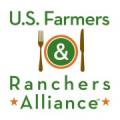The latest annual summary from USDA’s National Agricultural Statistics Service on farm and livestock operations contains some interesting numbers about dairy production – and it’s worth exploring the data a bit more because of its policy implications.
First, all of the figures I am citing are contained in the NASS “Farms, Land in Farms, and Livestock Operations, 2011 Summary,” which was released by USDA last month. This yearly report certainly makes plain the ongoing trend of American agriculture of the past 100+ years, wherein farms have gotten larger, even as there are fewer of them. There’s no new news in that.
Thus, it’s no surprise that the USDA assessment finds a gradual, ongoing reduction in the number of dairy operations. The USDA reports that in 2011 there were 60,000 dairy operations – which it liberally defines as any farm with a milk cow, whether that farm actually sells milk commercially or not. Using a more precise and limited definition of a dairy farm – one which actually is licensed to sell milk – the report finds that there were 51,481 dairies in the U.S. in 2011.
But behind USDA’s aggregate sum of dairy farms is an important fact: in 2011, for the first time, more than half of the U.S. milk supply (50.3%) was produced on farms with at least 1,000 cows – and more than one-third (34.6%) of the milk supply came from the 800 farms with over 2,000 head. To put those numbers in perspective, there are 950 operations with between 1,000 and 2,000 cows, along with those 800 in the 2,000+ range.
Hence, three percent of all U.S. dairy farms, 1,750 commercial operations in all, produce half the milk. There are an additional 1,650 farms in the range of 500 to 999 cows, accounting for another 12.6% of U.S. milk production. The bottom line is that six percent of the farms generate more than 60 percent of the milk supply.
That said, each of those farms is a small business, and none is exactly alike. And the concentration and scale of dairy production is no different than other sectors of agriculture, nor is it substantially distinct from other parts of the economy. The 80/20 rule, where 20% of businesses tend to generate 80% of commerce, applies to most walks of life, and dairy farming is no exception.
But this type of scale has important policy implications. As more of our milk – indeed, the majority of it – comes from larger farms, we need safety net programs that don’t discriminate based on size or volume of milk output. Unfortunately, that’s not the case right now, with MILC payments capped on the first three million pounds of milk production.
This is why NMPF has been backing H.R. 3062, Dairy Security Act, which contains a margin protection program that doesn’t limit coverage levels or insurance payments to a certain size. We can’t afford to leave exposed a significant chunk of our milk supply without a reasonable safety net under it. No other business sector would tolerate that kind of liability, and our government farm policy needs to take a clue from the private sector and be mindful of the consequences that come when policies overtly make vulnerable an important national food resource.
We also need mindful that other aspects of economic regulation, from labor policies to environmental safeguards, are also impacted by, and will affect, the scope of milk production, and the places and sizes of farms from where we get most of our milk.
It’s also important that we be mindful that while larger farms produce a lot of milk, most dairy operations are smaller in scale, and they deserve representation and a favorable regulatory climate as well. There’s no right answer to the question of how large a farm should be, and it’s a mistake if we let our industry get diverted in trying to provide only one response. Working together, dairy farmers of all sizes can achieve a great deal; it’s only when we have family fights about these issues that we lose our effectiveness, and that’s a big loss for everyone.


 ARLINGTON, VA – The National Milk Producers Federation (NMPF) said today that a new report on the anti-competitive practices pervasive in the New Zealand dairy industry highlights why the U.S. dairy farmer sector is so concerned with including U.S.-New Zealand dairy trade in a potential Trans-Pacific Partnership (TPP) free trade agreement (FTA). The issue is one that NMPF has addressed through its comments to the Obama Administration on TPP, including in its 2010 testimony to the U.S. International Trade Commission. NMPF applauded the new report’s effort to shed more light on this critical concern.
ARLINGTON, VA – The National Milk Producers Federation (NMPF) said today that a new report on the anti-competitive practices pervasive in the New Zealand dairy industry highlights why the U.S. dairy farmer sector is so concerned with including U.S.-New Zealand dairy trade in a potential Trans-Pacific Partnership (TPP) free trade agreement (FTA). The issue is one that NMPF has addressed through its comments to the Obama Administration on TPP, including in its 2010 testimony to the U.S. International Trade Commission. NMPF applauded the new report’s effort to shed more light on this critical concern.




